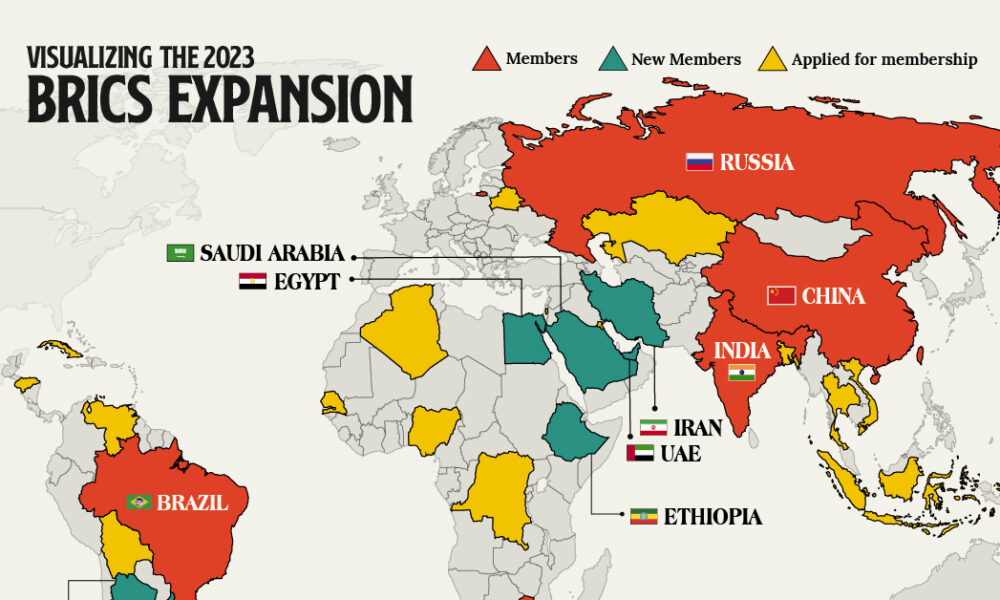The BRICS group, an alliance of emerging economies comprising Brazil, Russia, India, China, and South Africa welcomed five new members on January 1, 2024: Egypt, Saudi Arabia, the United Arab Emirates (UAE), Iran and Ethiopia. This significant expansion marks a new chapter for the group, bringing its total membership to ten and reshaping its global influence.
Key Dates and Developments
August 2023: The 15th BRICS Summit in Johannesburg announces plans to invite six countries (originally including Argentina) to join the bloc.
December 2023: Argentina declines the invitation.
January 1, 2024: The remaining five countries officially become BRICS members.
October 2024: Russia will host the next BRICS summit in Kazan, focusing on strengthening multilateralism and integrating the new members.
What’s New with BRICS
The expansion brings in countries from Africa and the Middle East, diversifying the group’s geographic and economic focus. With the addition of Saudi Arabia and the UAE, BRICS now represents a larger share of global GDP and energy resources. The expanded BRICS aims to strengthen cooperation among developing countries, potentially challenging Western dominance in global governance.
Integrating ten diverse economies with varying interests and priorities will require careful diplomacy and compromise. Whether BRICS can effectively leverage its collective weight to influence global trade, finance and development remains to be seen. The inclusion of Russia amid the Ukraine war could complicate the group’s international standing and cooperation efforts. The BRICS expansion is a significant development with far-reaching implications for the global political and economic landscape. As the group steers its new composition and charts its future course, its success will depend on its ability to overcome internal challenges, harness its collective potential and adapt to a rapidly changing world.

